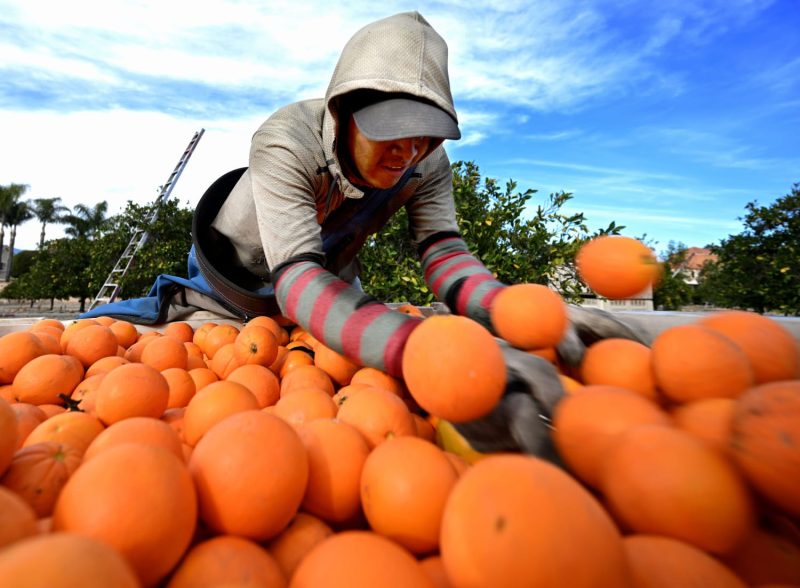
Orange juice prices are going through the roof — forcing some makers to consider alternative fruits
Orange juice prices have climbed to fresh all-time highs amid persistent supply constraints, pushing the industry into crisis mode and forcing some makers to consider alternative fruits.
Prices of the breakfast staple have been climbing rapidly in recent years, partly driven by declining output in Florida — the main producer of orange juice in the U.S. — and climate-fueled extreme weather in the main orange producing areas of Brazil.
The South American agricultural powerhouse is the world’s largest producer and exporter of orange juice, which means it plays a hugely influential role in shaping the global industry.
The benchmark frozen concentrated orange juice futures, traded on the Intercontinental Exchange in New York, closed at $4.77 per pound on Wednesday. That’s nearly double the price registered a year ago.
Harry Campbell, a commodity market data analyst at research group Mintec, said that soaring orange juice prices have forced manufacturers and blenders to adapt to the situation by considering alternative fruit juices.
“A lot of them will be changing the quantities of juice they are putting in their blends to drop the orange juice and increase other juices, such as pear juice, apple juice, grape juice, so they are less reliant on the orange juice,” Campbell told CNBC via telephone.
“It does seem like this [situation] is going to be here for the longer term,” he added, noting that some players in the orange juice market had observed a large drop in demand year-over-year.
“Until that point is reached where consumers are no longer willing to pay the premium for orange juice, because it is at such low supply, prices will continue to drive up,” Campbell said.
Research center Fundecitrus warned recently that excessive heat in Brazil last year meant the South American country was likely on track to register one of its worst orange harvests in more than three decades.
In a report published on May 10, the citrus growers organization forecast that Brazil was set to produce 232.4 million boxes of oranges (each weighing approximately 40.8 kilograms) in the 2024 to 2025 season. That represents a 24% decline when compared to the previous cycle.
Analysts say Brazil typically produces about 300 million boxes of oranges each cycle, although climate change has dramatically reduced crop production. Climate change is making extreme weather events more frequent and more intense.
Fundecitrus said a series of intense heatwaves in Brazil occurred at a critical phase of flowering and early fruit formation between September and November last year, substantially hampering production.
A citrus disease known as greening, a tree disease with no known cure that results in bitter, stunted fruit, has been another headwind for orange farmers. Analysts have warned that the problem is likely to wreak havoc in orange groves across the world for some time to come.
“Orange Juice prices are rising because of the three Ds: Drought, Disease [and] Demand,” Dave Reiter, a trader with Reiter Capital Investments LLC, told CNBC via email.
“When most people think of orange juice production, they think of Florida and California. Actually, Brazil is the largest producer of oranges and orange juice,” Reiter said.
“The majority of Brazil’s orange juice production occurs in Sao Paulo and Minas Gerais. These two areas have been struggling with weather problems and disease for the past few years.”
Reiter described the benchmark orange juice futures contract as a thinly traded market, which means it can lead to bouts of “substantial volatility.” He estimated that the next orange juice price target was $5.16 per pound.
